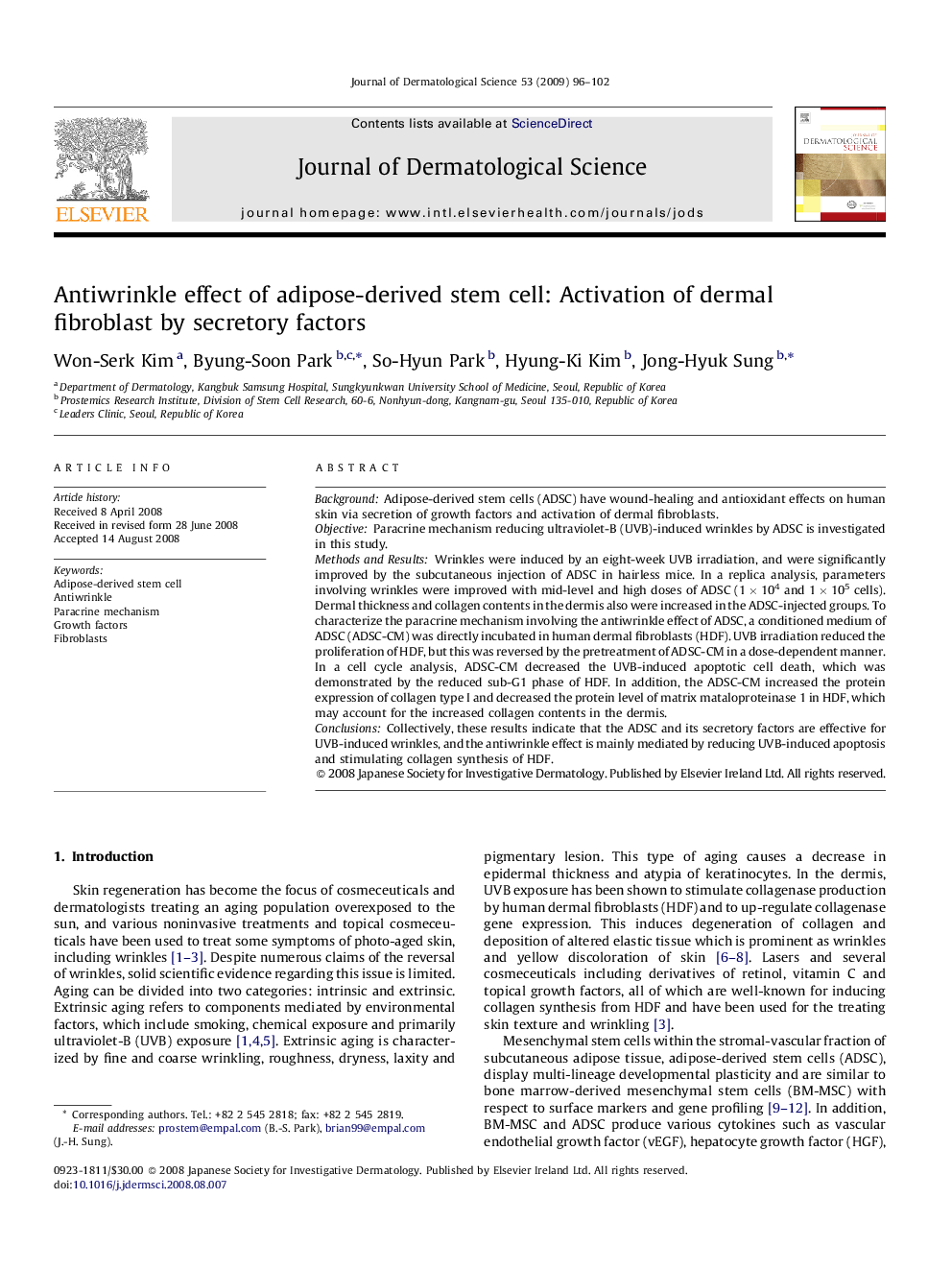| Article ID | Journal | Published Year | Pages | File Type |
|---|---|---|---|---|
| 3213818 | Journal of Dermatological Science | 2009 | 7 Pages |
BackgroundAdipose-derived stem cells (ADSC) have wound-healing and antioxidant effects on human skin via secretion of growth factors and activation of dermal fibroblasts.ObjectiveParacrine mechanism reducing ultraviolet-B (UVB)-induced wrinkles by ADSC is investigated in this study.Methods and ResultsWrinkles were induced by an eight-week UVB irradiation, and were significantly improved by the subcutaneous injection of ADSC in hairless mice. In a replica analysis, parameters involving wrinkles were improved with mid-level and high doses of ADSC (1 × 104 and 1 × 105 cells). Dermal thickness and collagen contents in the dermis also were increased in the ADSC-injected groups. To characterize the paracrine mechanism involving the antiwrinkle effect of ADSC, a conditioned medium of ADSC (ADSC-CM) was directly incubated in human dermal fibroblasts (HDF). UVB irradiation reduced the proliferation of HDF, but this was reversed by the pretreatment of ADSC-CM in a dose-dependent manner. In a cell cycle analysis, ADSC-CM decreased the UVB-induced apoptotic cell death, which was demonstrated by the reduced sub-G1 phase of HDF. In addition, the ADSC-CM increased the protein expression of collagen type I and decreased the protein level of matrix mataloproteinase 1 in HDF, which may account for the increased collagen contents in the dermis.ConclusionsCollectively, these results indicate that the ADSC and its secretory factors are effective for UVB-induced wrinkles, and the antiwrinkle effect is mainly mediated by reducing UVB-induced apoptosis and stimulating collagen synthesis of HDF.
